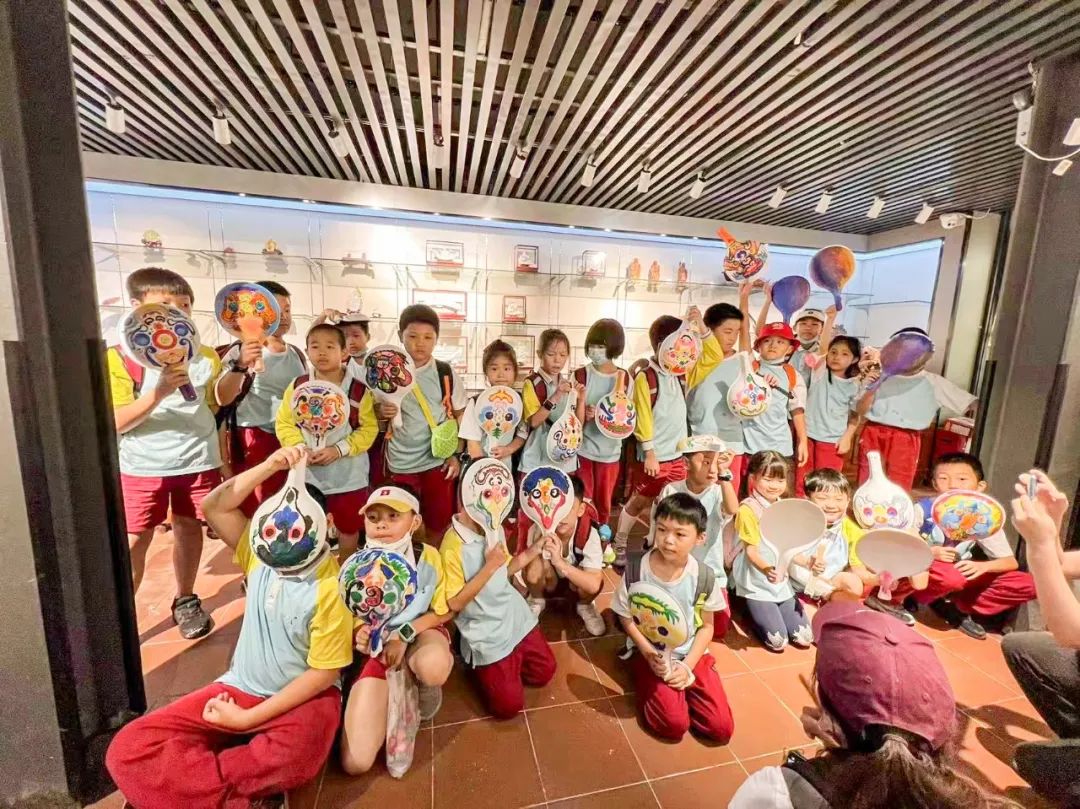Knowledge comes from books and also from experience of the world. Ancient Chinese learned in school, learned from books, and even learned from observations between heaven and earth.
During SCA Sabbatical Week, students can explore different fields with partners who have similar interests. They extend the knowledge of the textbook to reality, so that the inquiry is not superficial and combined with the application of real life.
Toady, Let us follow students from G1-3 to Yong Qing Fang, an intangible heritage cultural landmark in Guangzhou. Here, a wonderful journey of the intangible heritage culture of Lingnan was explored!
As a national AAAA tourist area, Yong Qing Fang is a place where Lingnan feature of historic Guangzhou, traditional Xiguan specialty, and modern artistic elements are blended. Here, people can see how tradition and modernity come together with each other yet still with their own unique glare shining.
On the first day, the students were separated into groups after the opening ceremony. Then, they visited Yong Qing Fang in groups to understand what Guangdong culture is, which meant to have an overall impression of architecture, food, culture and creativity, and business atmosphere of Guangdong culture. During the visit, a vibrant civic and cultural life was directly experienced as a good start.
(Students were visiting the Movable Type Printing Experience Hall)
Guangdong Cantonese Opera Theatre Visit
Cantonese opera, also known as Guangdong drama, is the dominant from in Guangdong regions. Walking into the Cantonese Opera Museum, the students sensed what a typical Lingnan garden is. As the tutor went on explaining, the students appreciated that Cantonese opera is an integral part of Lingnan culture, and the Cantonese Opera Museum is an important carrier of the preservation and inheritance of Cantonese opera.
(Students were visiting the Museum and trying the unique singing tone of Cantonese opera)
Intangible Cultural Heritage Exploration
Workshop of Canton Porcelain
"Use the brush as the needle, use the paint as the thread. With the brush crossing and the paint interweaving longitudinally and laterally, spring flowers are vividly illustrated on a silver porcelain surface, instead of a damask." is the best summary of Canton porcelain. The students went to the Canton porcelain workshop at Yong Qing Fang to experience how a work is completed in an orderly manner.
Luckily, the students got the opportunity to appreciate the exquisite skills of Mr Tan Guanghui, the national inheritor and master of Canton porcelain, in a near distance. Under the guidance of Mr Tan, the students learned skills including brush holding, line tracing and color filling, and finally finished their own Canton porcelain works by hand.
(Students were experiencing the making of a Canton porcelain)
Workshop of Canton Embroidery
Canton embroidery is a folk embroidery craft that originated in Guangzhou and its ancient dependencies of Nanhai, Panyu and Shunde. It is known as Guangdong embroidery together with Chaozhou embroidery. Moreover, it is one of the four famous embroideries of China, the other three including Hunan embroidery, Sichuan embroidery, and Jiangsu embroidery.
The students were led by Master Li Min, the inheritor of Canton embroidery, to learn the history and culture and to experience Canton embroidery in an immersive way.
(Students were trying Canton embroidery)
Workshop of Mooncake Molds
When admiring the moon and eating mooncakes, have you ever noticed the patterns on the mooncakes? The patterns are pressed out by molds, which is called "mooncake molds" by Guangzhou people. Mooncake molds is also one of the intangible cultural heritages of Guangdong Province. The mooncake molds is used mainly during the Lunar New Year and important festivals, therefore almost no one knows how to make them after so many years.
(Students were molding mooncakes)
This time, the municipal representative inheritor of "Guangzhou mooncake molds technique" led the students to learn about the past and present life of the technique, and to enjoy the process of molding mooncakes happily.
After completing all the hands-on work and practice, the students returned to campus and had a presentation about their learning. Lots of students came up to the stage and shared their feelings and insights, including their heartfelt appreciation for all the beauty they saw with their own eyes, whether it was the beauty of architecture, technique or culture, or their own unique understanding.
(Students actively made their presentations)
At this point, Lingnan intangible cultural heritage exploration themed "searching for the beauty & passing on the soul of intangible cultural heritage" has come to an end.
In this activity and practice, the students have learned rich knowledge about and admired the charm of Lingnan intangible cultural heritage.
We hope that the students can integrate what they have learned on books with what they have experienced in life. More importantly, the awareness of taking action to inherit such invaluable heritage can also be built up, and the students are encouraged to carry forward the heritage inheritance with their sense of responsibility, creativity and ability of putting concepts into practice!





















